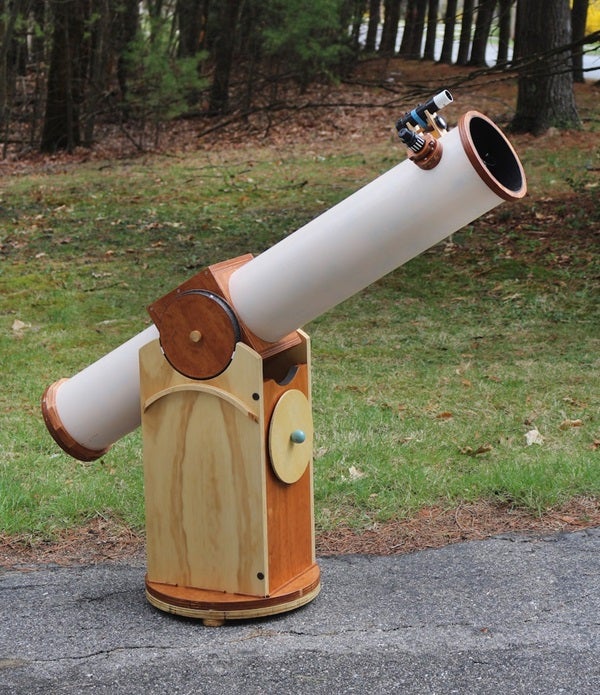When first glancing at that title, some experienced observers may think I’ve written myself into a corner. You see, there is no such thing as a perfect first telescope. In fact, there’s really no such thing as a perfect scope, period. If you want to tease out the intricate details of Jupiter’s cloud belts or split apart a tight double star, you’ll need a scope that generates the highest practical magnification — perhaps a refractor or a catadioptric telescope (a type of telescope that combines both refracting and reflecting elements) with a high focal ratio, say f/10 or greater. However, if you want to chase “faint fuzzies,” where the amount of light collected is paramount, you’d do well with a large-aperture reflector with an f/4 or f/5 focal ratio. So, unless you’re content seeking out the same old targets over and over, the perfect (or near-perfect) scope should be a compromise.
The ability to reveal a wide spectrum of cosmic objects is just one requirement for an entry-level telescope. There are other, equally important, questions to consider before making your first purchase: Does it provide quality optics and mechanical stability at an affordable price? Is it lightweight and easily portable? Can it be set up without much time or fuss? Is it easy to use and maintain?
But if there is no “perfect” beginner’s telescope, what should you choose to best satisfy all of the aforementioned criteria? I submit that it’s a bare-bones 6-inch f/8 Newtonian Dobsonian-mounted reflector. An f/8 focal ratio permits high-power views of lunar and planetary detail and enough resolution to split double stars less than one arcsecond apart. Yet it still allows for satisfactory low-power, wide-field views of deep-space targets.
Although prices have risen in recent years, a typical no-frills, commercially made 6-inch f/8 reflector costs around $400 or less. Rarely heavier than 50 pounds (23 kilograms), these scopes are lightweight and portable, making them quick and easy to set up in your backyard or load into your car for a trip to a remote observing site. If it’s perched on a simple Dobsonian mount (sans electronics), it can be ready to use in just a minute or two.
You might ask: Considering the availability of larger instruments, wouldn’t you be short-changing yourself with a measly little 6-inch scope? Hardly! In a past column (April 2011), I sang the praises of my first astronomical telescope, Edmund Scientific’s Space Conqueror, a 3-inch f/10 reflector. It was the only one I used during my first decade as an amateur astronomer, and I still take it out for the occasional spin around the galaxy. Over the years, that “little scope that could” has shown me innumerable lunar features; all of the planets (now that Pluto has been demoted); 120 asteroids down to magnitude 11.4; 1,500-plus double, triple, and multiple stars; more than 100 NGC objects; and the entire Messier catalog. It did serious citizen science work, too, helping me gather over 1,000 variable star estimates, which I forwarded to the American Association of Variable Star Observers. Now imagine what a backyard astronomer can do with a 6-inch reflector!
Speaking of, here’s an interesting thought for the seasoned backyard astronomer who needs to downscale from that bulky 12-inch Dob to something easier to handle. The same bare-bones 6-inch f/8 Dobsonian-mounted reflector telescope that’s appropriate for the beginner will also satisfy your needs. Your last telescope won’t have the light grasp of the big Dob, but you’ll spend more time under the night sky — and your creaky back will thank you!
That brings me to the crux of this article: When asked to describe the perfect telescope for anyone, novice or expert, experienced skygazers will usually say the best scope is whichever one you’ll use the most. And being versatile, relatively inexpensive, portable, and user-friendly, the classic 6-inch f/8 Dobsonian fits the bill perfectly.
Questions, comments, or suggestions? Email me at gchaple@hotmail.com. Next month: Astroimaging for Dummies. Clear skies!










